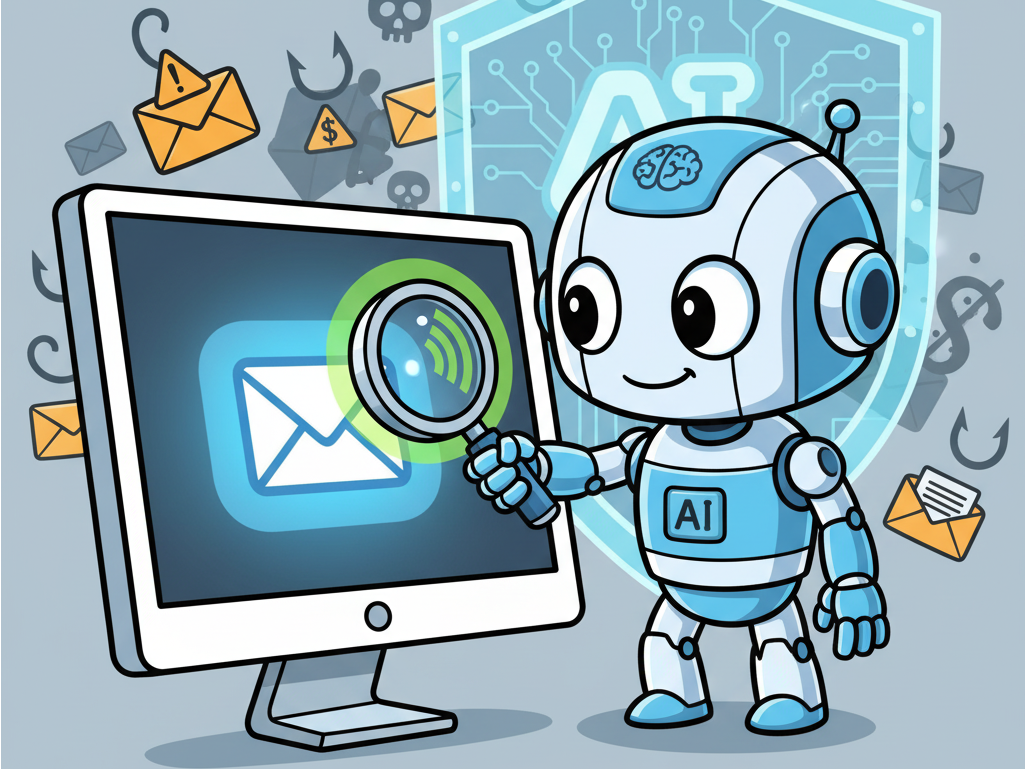Build a Phishing Filter with Finetuned BERT and Granite
Build an interactive Gradio web app by fine-tuning BERT, DistilBERT, and IBM Granite LLM to detect phishing emails and strengthen AI-driven cybersecurity defenses. Use Huggingface pre-trained LLMs to fine-tune your own BERT-based phishing email classifier from data loading to model delivery. Integrate the IBM Granite API to design an LLM assistant that highlights malicious patterns, detects suspicious phrases, and reveals evolving attack strategies. By the end, you will have created a shareable web app with Gradio that deploys your fine-tuned model and LLM assistant to protect users worldwide.

Language
- English
Topic
- Artificial Intelligence
Enrollment Count
- 87
Skills You Will Learn
- Generative AI, LLM, Python, Artificial Intelligence, CyberSecurity, Machine Learning
Offered By
- IBMSkillsNetwork
Estimated Effort
- 45 minutes
Platform
- SkillsNetwork
Last Update
- December 6, 2025
What You’ll Learn
- Fine-tune BERT-based models for phishing detection: Train and evaluate lightweight transformers to classify emails as legitimate or phishing.
- Integrate LLMs for explainability: Use IBM Granite as a second defense layer to extract and explain suspicious phrases that indicate phishing attempts.
- Build an interactive web interface: Develop a Gradio-powered demo where users can paste emails, get predictions, view confidence scores, and read explanations.
- Apply explainable AI in cybersecurity: Learn how combining classifiers with reasoning-capable LLMs improves both accuracy and transparency.
Who Should Enroll
- Early-career data scientists or ML engineers who want to apply NLP to cybersecurity problems.
- Cybersecurity enthusiasts and professionals looking to understand how AI can enhance phishing detection.
- Students and researchers interested in explainable AI and real-world model deployment.
Why Enroll
What You’ll Need
- Basic Python programming knowledge.
- Some familiarity with NLP or Hugging Face models (helpful but not required).
- Interest in practical AI applications.

Language
- English
Topic
- Artificial Intelligence
Enrollment Count
- 87
Skills You Will Learn
- Generative AI, LLM, Python, Artificial Intelligence, CyberSecurity, Machine Learning
Offered By
- IBMSkillsNetwork
Estimated Effort
- 45 minutes
Platform
- SkillsNetwork
Last Update
- December 6, 2025
Instructors
Jianping Ye
Data Scientist Intern at IBM
I'm Jianping Ye, currently a Data Scientist Intern at IBM and a PhD candidate at the University of Maryland. I specialize in designing AI solutions that bridge the gap between research and real-world application. With hands-on experience in developing and deploying machine learning models, I also enjoy mentoring and teaching others to unlock the full potential of AI in their work.
Read moreContributors
Wojciech "Victor" Fulmyk
Data Scientist at IBM
Wojciech "Victor" Fulmyk is a Data Scientist and AI Engineer on IBM’s Skills Network team, where he focuses on helping learners build expertise in data science, artificial intelligence, and machine learning. He is also a Kaggle competition expert, currently ranked in the top 3% globally among competition participants. An economist by training, he applies his knowledge of statistics and econometrics to bring a distinctive perspective to AI and ML—one that considers both technical depth and broader socioeconomic implications.
Read moreJoseph Santarcangelo
Senior Data Scientist at IBM
Joseph has a Ph.D. in Electrical Engineering, his research focused on using machine learning, signal processing, and computer vision to determine how videos impact human cognition. Joseph has been working for IBM since he completed his PhD.
Read moreMatthew Wu
Marketer at IBM
Supporting Cognitive Class and IBM through digital marketing and tailored content creation
Read more